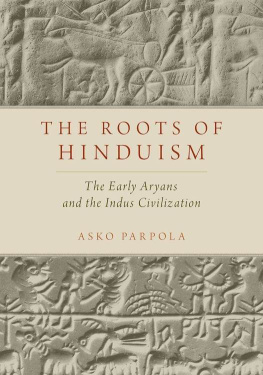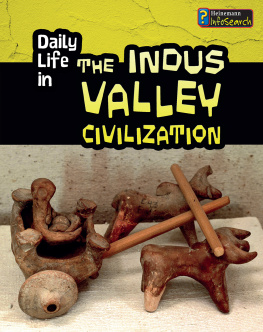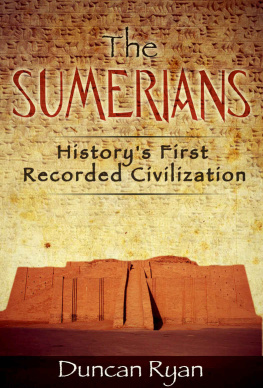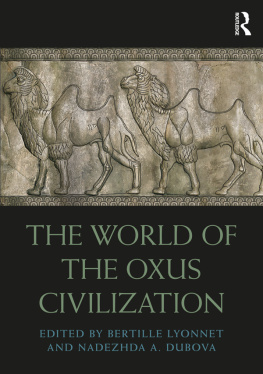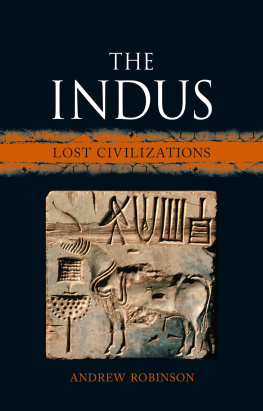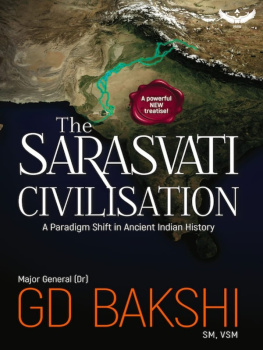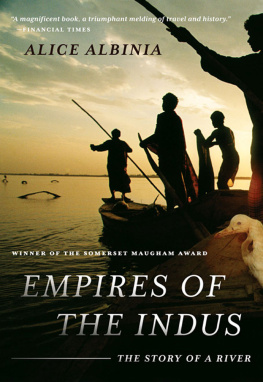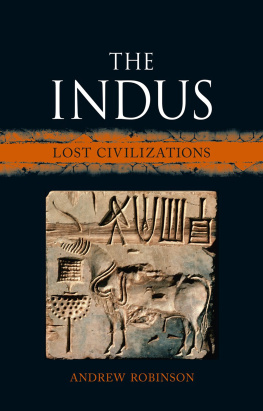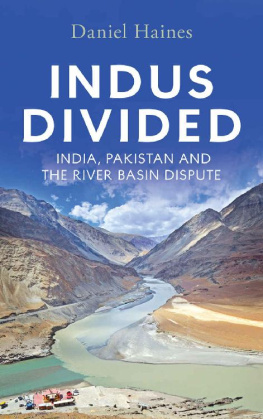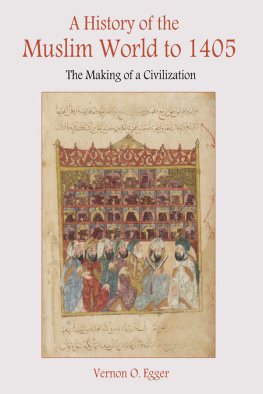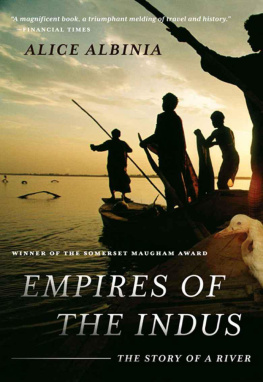The Roots of Hinduism
The Roots of Hinduism
The Early Aryans and the Indus Civilization
Asko Parpola


Oxford University Press is a department of the University of Oxford. It furthers the Universitys objective of excellence in research, scholarship, and education by publishing worldwide.
Oxford New York
Auckland Cape Town Dar es Salaam Hong Kong Karachi
Kuala Lumpur Madrid Melbourne Mexico City Nairobi
New Delhi Shanghai Taipei Toronto
With offices in
Argentina Austria Brazil Chile Czech Republic France Greece
Guatemala Hungary Italy Japan Poland Portugal Singapore
South Korea Switzerland Thailand Turkey Ukraine Vietnam
Oxford is a registered trademark of Oxford University Press in the UK and certain other countries.
Published in the United States of America by
Oxford University Press
198 Madison Avenue, New York, NY 10016
Asko Parpola 2015
All rights reserved. No part of this publication may be reproduced, stored in a retrieval system, or transmitted, in any form or by any means, without the prior permission in writing of Oxford University Press, or as expressly permitted by law, by license, or under terms agreed with the appropriate reproduction rights organization. Inquiries concerning reproduction outside the scope of the above should be sent to the Rights Department, Oxford University Press, at the address above.
You must not circulate this work in any other form and you must impose this same condition on any acquirer.
Cataloging-in-Publication data is on file at the Library of Congress
ISBN 9780190226909 (hbk.); 9780190226923 (pbk.)
eISBN 9780190226930
Contents
Indias earliest urban culture, which existed from 2600 until 1900 BCE, was discovered in the valley of the Indus River in the early 1920s. The Indus civilization had a population estimated at one million people, who lived in more than 1000 settlements, several of them cities of some 50,000 inhabitants, most notably Harappa and Mohenjo-daro, which display extraordinary town planning and water engineering, but not such splendid palaces and temples as ancient Egypt or Mesopotamia. With an area of nearly a million square kilometers, approximately a quarter the size of Europe, the Indus civilization was more extensive than the other key urban cultures of the time, in Mesopotamia and Egypt; it stretched eastwards from the Indus Valley as far as about Delhi and southwards almost as far as Mumbai (). It had long-distance contacts with West Asia, as proved by Indus objects and cuneiform records found in Mesopotamia. It also largely established a way of life that has continued in the villages of the subcontinent until the present day.
Yet, after almost a century of excavation and research, the Indus civilization remains comparatively little understood, especially in regard to its thought. What language did the Indus people speak? Is it related to the Sanskrit language of north India, to the Dravidian languages of south India, or to another surviving Indian language family? How might we decipher the exquisitely carved Indus inscriptions? What deities did the Indus civilization worship? Did these deities survive to become part of the religion described in the earliest surviving Indian literature, the Vedas, composed in Sanskrit, which are generally attributed to the centuries after 1500 BCE? Did the Aryan composers of the Vedas migrate to South Asia from outside the subcontinent? If so, where did they come from, and during what period did they migrate? Indeed, are the roots of contemporary Hinduism to be found in the religion of the Indus civilization as well as in the Vedic religion?
This book proposes answers to these fundamental questions about the beginning of Indian civilization. Some of the answers occurred to me soon after the start of my career in the study of Vedic literature and religion half a century ago, while others have struck me only in the last few years, following decades of research, both in Europe and in Asia. I have published most of them in the scholarly literature (where the interested reader will find more detail and full documentation). However, this literature is not well known outside a relatively small circle of experts. The time is ripe to introduce what I think are the most solid of my conclusions to a wider readership. My hope is that this book will stimulate further research and thus contribute to a solution that will be acceptable to many scholars.
Unfortunately, as I shall outline in the Introduction, at present there is little agreement on many of the issues I discuss. Since the 1980s, the above questions, especially the Aryan problem, have been debated with increasing animosity, colored by the history of modern colonialism in India, and often by people without pertinent qualifications. Hence, it is vital to sort out the origins of the Vedic Aryans if we are to establish the true linguistic identity and religious affinity of the Indus civilization. Fortunately, the prospect for settling this vexed question has recently improved with the advance of archaeological excavations in Central Asiawhere a major new Bronze Age civilization (Bactria and Margiana Archaeological Complex, BMAC, or the Oxus civilization), was discovered in the 1970sand in Eurasia, including Russia.
Archaeological cultures have long been correlated with linguistic and ethnic groups. To take one relevant example, the proposal that people of the Andronovo cultures of Kazakhstan spoke an Indo-Iranian language was put forward by A. M. Tallgren in 1928. Various later scholars have had the same opinion, but while some speak of Proto-Aryan, others speak of Proto-Indo-Aryan, others of Proto-Iranian; others (e.g., and later), who has developed this methodology remarkably.
The relatively uniform material cultures studied by archaeology reflect human communities, whose members must have communicated with each other by means of a language (in some cases more than one language). Shared material culture and shared language are both among the strongest sources of ethnic identity. They may change very little if people stay in the same place and receive no visitors from beyond their habitat, as has happened in Iceland since the early Viking Age. Contact with other communities has normally led to changes, the extent of which depends on the intensity of contact. Trade may introduce new artifacts and ideas, and loanwords denoting these artifacts and ideas. Conquest and immigration may lead to a communitys abandoning its earlier culture and language in favor of a new culture and language. Language shifts involve a period of bilingualism, when part of the community speaks two (or more) languages.
Such continuities and change can be analyzed using a comparative method. Both archaeology and linguistics have developed techniques to do this. In principle, when correlating languages with archaeology, it is better not to assume long-distance migrations, except under exceptional circumstances, such as the combination of open steppe with wheeled vehicles or horses (cf. :369). There must always be tangible archaeological evidence for assuming the existence of such movements.
The most important methodological principle is that isolated correlations are invalid, only a web of correlations similar to that of an entire language family can be convincing. Every piece of evidence available from archaeology and linguistics should be used and should fit together. With this methodology in mind, I have been searching, since 1973, for an optimal solution to this puzzle: How can the Eurasian archaeological finds be correlated with the discoveries of Indo-European historical linguistics and the route of the Aryan migrations to India be established?

